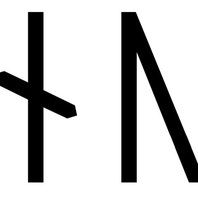
Viking Names
Gunnvor
Gunnvǫr is a common name throughout the Norse world. It is very frequent in Norway and Denmark where it is also found in place-names and in Sweden it is found in several runic inscriptions. In Landnámabók ‘The Book of Settlements’, a Gunnvǫr is the daughter of one of the settlers of Iceland. Additionally, it is found in early Lincolnshire documents (c. 1200) and occurs in Domesday book for Yorkshire. The name also occurs in an inscription on an eleventh-century sundial in St Bartholomew’s Church, Aldbrough, East Yorkshire, together with the male name Ulf. The second wife of Richard I is referred to as Gonnor/Gunnor/Gunwera in Norman sources and there are other bearers of the name in Normandy. Gunnvǫr is a Old Norse compound name formed from Gunn- from gunnr, guðr ‘battle’ and –vǫr, the feminine form corresponding to -varr which is either derived from the adjective varr ‘aware’ or the noun *warjaʀ ‘protector’.
Read More
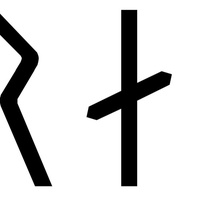
Viking Names
Grani
The male personal name Grani, or possibly Gráni, is the first element of the place-name Granby, Nottinghamshire. The name occurs sporadically in saga-literature and also appears on the rune-stone from Berezan’ in southern Ukraine, erected by visiting Swedes in the eleventh century. It is also the name of the horse of the legendary hero Sigurd the Serpent-Slayer. If the name, whether of the horse or as a male name, is Grani, then it is related to the Old Norse word grǫn, referring to the ‘upper lip’ or ‘moustache’, and can be compared to other original bynames like Skeggi from skegg ‘beard’. Alternatively, it might be related to the adjective grár ‘grey’ or verb grána ‘to grow grey’, and would similarly have originally been a descriptive byname. In Granby, a document from c. 1200 refers to Granehou, a mound (Old Norse haugr) possibly named after the same man who gave his name to the village.
Read More
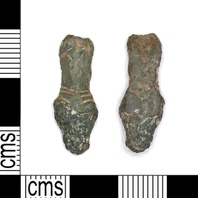
Viking Objects
Anglo-Scandinavian Strap-End (LEIC-1DD0CD)
This copper-alloy strap-end fragment is decorated in an Anglo-Scandinavian style consisting of a triangular cross-sectioned shaft which terminates in a triangular-shaped animal head. It is classed as a Thomas Class B, Type 4 strap-end which were introduced during the later eighth or early ninth century and remained popular into the eleventh century.
Read More
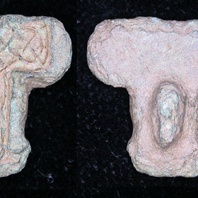
Viking Objects
Irish Gilded Mount (LEIC-09D1C8)
This fragment of a gilded copper-alloy mount is roughly T-shaped, and has a raised border around a panel of chip-carved interlace which has traces of gilding. It is possible that it made its way to England prior to Viking incursions but it is equally likely that the Vikings brought this brooch with them as plunder after raiding various areas in Ireland.
Read More
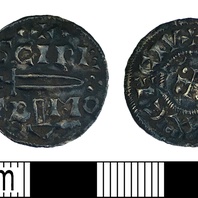
Viking Objects
Silver Viking Penny (DENO-FCA770)
This is a silver penny of a type know as the St Peter Sword/Cross type which bears an inscription to St Peter of York (c. 905-927) and was minted at York between 921 and 927. Viking rulers in the Danelaw eventually took up the Anglo-Saxon practice of minting coins which helped legitimise their authority.
Read More
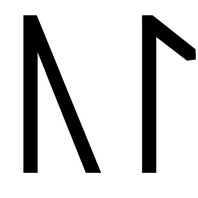
Viking Names
Gulla
Gulla is recorded in several runic inscriptions in Sweden. There is one attestation of Gulla in the form of Golle in a medieval Lincolnshire document (c. 1218-1219). It is a short form of Old Norse names in Guðl-.
Read More

Viking Names
Flik
Flík was originally a byname possibly related to Old Norse flík ‘tatter’ hence ‘gaping wound’ or the name of a farm. It the first element of the place-name Flixborough, Lincolnshire.
Read More
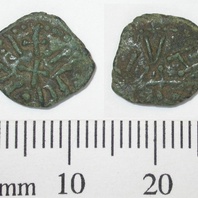
Viking Objects
Northumbrian Styca (DENO-EF4544)
The blundered legends on this example suggest it is an imitation of stycas minted for a Northumbrian ruler or the Archbishops of York. While Wessex and Mercia were using silver coinage as part of their monetary economy, Northumbria was using copper coins known as stycas, which may have contained trace amounts of silver. The concentration of these coins at sites such as Torksey and ARSNY suggests that they could have remained in circulation after the fall of Northumbria in 866 but were taken to the sites by the Vikings during their campaigning. They were not much use to the Vikings within their silver-based bullion economy but it is suggested that they were treated as raw material and were used as commodity money instead. The evidence for the production of copper-alloy strap-ends at Torksey and ARSNY supports this idea that the stycas were used for production.
Read More
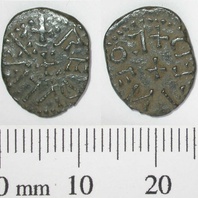
Viking Objects
Northumbrian Styca (DENO-60AFD2)
This copper-alloy styca was probably minted by the moneyer Coenred in the name of King Redwulf of Northumbria. While Wessex and Mercia were using silver coinage as part of their monetary economy, Northumbria was using copper coins known as stycas, which may have contained trace amounts of silver. The concentration of these coins at sites such as Torksey and ARSNY suggests that they could have remained in circulation after the fall of Northumbria in 866 but were taken to the sites by the Vikings during their campaigning. They were not much use to the Vikings within their silver-based bullion economy but it is suggested that they were treated as raw material and were used as commodity money instead. The evidence for the production of copper alloy strap-ends at Torksey and ARSNY supports this idea that the stycas were used for production.
Read More
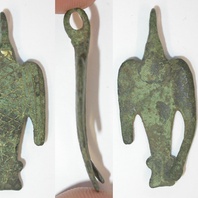
Viking Objects
Bird Pendant (DENO-55AE35)
A pendant of similar shape although with different decoration is dated to the second half of the ninth century from Yaroslavl, Russia. The bird symbol, very similar to the one depicted on this pendant, was used by the Rurik dynasty which had started the conquest of Slavic lands in the mid-ninth century and later formed the polity of Rus’. With some exceptions, pendants were generally worn by women as an accessory to Scandinavian dress.
Read More
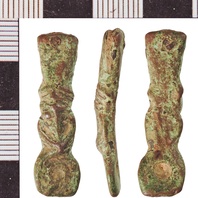
Viking Objects
Zoomorphic Strap-End (NLM-09BBD5)
This cast zoomorphic strap-end has been classified as Thomas Class G and contains decoration consisting of a heart-shaped muzzle, small pellet eyes, and angular grooves which may represent brows. Strap-ends came in various styles and were fairly common throughout the Viking world. They were used to decorate the ends of belts and to stop them getting damaged.
